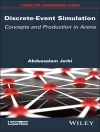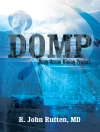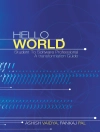What are the relations between the shape of a system of cities and that of fish school? Which events should happen in a cell in order that it participates to one of the finger of our hands? How to interpret the shape of a sand dune? This collective book written for the non-specialist addresses these questions and more generally, the fundamental issue of the emergence of forms and patterns in physical and living systems. It is a single book gathering the different aspects of morphogenesis and approaches developed in different disciplines on shape and pattern formation. Relying on the seminal works of D’Arcy Thompson, Alan Turing and René Thom, it confronts major examples like plant growth and shape, intra-cellular organization, evolution of living forms or motifs generated by crystals. A book essential to understand universal principles at work in the shapes and patterns surrounding us but also to avoid spurious analogies.
विषयसूची
Introduction.- Self-organization at equilibrum. A model system: ferrofluids.- Hierarchical networks of fractures.- Liquid crystals and morphogenesis.- Biological self-organization by way of the dynamics of reactive processes.- Sand dunes.- Morphodynamics of secretory pathways.- From epigenomics to morphogenetic emergence.- Animal morphogenesis.- Phyllotaxy.- Logic of forms.- Forms emerging from collective motion.- Systems of cities and levels of organization.- Levels of organization and morphogenesis: the viewpoint of D’Arcy Thompson.- Morphogenetic models of René Thom.- Morphogenesis, structural stability and epigenetic landscape.- Morphological and mutational analysis: tools for morphogenesis study.- Morphogenesis in computer science.












